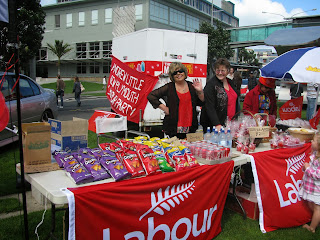The most public event of my lifetime was the 9/11 attack on the twin towers in New York. Only the John Kennedy assassination or the dropping of the first atomic bomb came close.
A few days after that September morning, we attended a conference of the Sea of Faith, and one of the sessions was about liturgies, formal celebrations of religious belief, led by our friends Ian and Jill Harris.
A day or two later I wrote a poem called "After the Liturgy", which was intended to be public poetry, to be read in a loud declamatory voice, to a large crowd, in a public place. Here it is:
AFTER THE LITURGY
Mould a new sign in the metal
Keep the silver of the burning bush
Keep the chalice at the cathedral door
Keep the cross on the altar
On the minaret the crescent, and the trident on the temple
Keep over all a golden dome;
Let it show
The steel form of a tall building
And the aluminium shadow of a plane.
Keep the aluminium from touching the steel
Corrosion will destroy them both
We will forget our future
No longer free to dream of our past.
Chisel a new sign in the wood
Not a hero of exploration
Or a warrior from the battle
Holding up his mere in victory
Even a sage koumatua openmouthed
Cannot find the korero for this occasion.
Carve them all
Silent, still, amazed.
History is dumb to show us a parallel.
Did you feel the foundations move,
The lurch of the stricken world
Taking the breath from our lungs?
Weave a new sign in the flax
Set it up on the walls of the house
Between the posts burnt black
And below the smoke-singed backbone.
Let it stand
In the heart of our ancestor
Bearing witness to the conflict
Between the patriarch and the young woman,
Between the high fortress and the open plain,
Between the Word and the music of love.
The map has not been drawn that can point the way.
Make a new moko in the flesh
Wear it where the tears
And worry furrows of the face
Mingle with the whakapapa.
My ancestor never knew
He did not foresee
A new line has begun
To enclose the genealogies
Of all the whanau of the earth.
Let it show
The dream curling around my ear
Pointing straight to the centre of your tongue.
Write a new sign on the page
Set it on the stand for all to see
While they tune their voices of wire
While they adjust their instruments of brass
Before the baton rises and the overture begins
When the world is hushed before an existential moment.
Let it show
An Iraqi child on a leaky boat south of Java
A Palestinian student caught in Bethlehem crossfire
The banner of a Belfast wall
The graffiti across the boulevard from Makati.
Crush it to a powder and post it to the militarists
In their five-sided towers
So that they catch the fever of peace.
Carve a new sign in the rock
Set it up on the edges of the world
Beyond the line of boundary markers
And the wall built by the emperor to
Keep out the barbarian hordes
Far from the fallen obelisks
And the debris of crumbling pyramids
The sphinxes and the triumphal arches
Oozing and weeping for their glories;
Let it show
A woman twisting her broken body
Around the figure of a child.
--Sept 2001
Since then I have been jotting down memories of my earlier life, and some of them I will post in the next blog.
Till then, kia ora!

 For my money, the pick of this bunch was a flawless
rendition of Astor Piazolla’s “Café 1930” from his “History of the Tango”
sequence.
For my money, the pick of this bunch was a flawless
rendition of Astor Piazolla’s “Café 1930” from his “History of the Tango”
sequence.






















